In the Highlands or a Lab, a Writer’s Obligations Persist
Posted on February 10, 2014
Filed Under Communication, Technology, The Writing Life | Leave a Comment
Here are two web commentaries on efficient writing, efficient because it admirably accomplishes its purpose, whether that be to entertain or to instruct. Romance novels are one category, and academic or technical writing another. Technical writing is held to a higher standard of reality, since it describes actual (that is, current) places and/or systems. Romance writing leaves everything to the writer’s conjuring, but a good writer won’t abuse that privileged state.
Academic and technical writing, notes the Precise Edit’s Blog, “can be complicated, tedious and confusing. They can be terribly boring.” And there’s no way to waive such abuses of a reader’s time and attention to duty. Density is density, boring is boring. On the other hand, romance writing, in which the author’s imagination controls the narrative, can be turgid, too.
 Ceci Giltenan is the author of “Highland Solution,” a novel of medieval Scotland published last fall. In her professional life, Ms. Giltenan’s expertise is in drug development “and much of it involves reporting results from human clinical studies. In this kind of writing, one starts at the beginning, tells the full story in chronological order and includes every known detail.”
Ceci Giltenan is the author of “Highland Solution,” a novel of medieval Scotland published last fall. In her professional life, Ms. Giltenan’s expertise is in drug development “and much of it involves reporting results from human clinical studies. In this kind of writing, one starts at the beginning, tells the full story in chronological order and includes every known detail.”
Writing a romance novel, however, is more like creating and solving, or leading the reader to solve, an imagined puzzle. “I provided the pieces and left the reader to put them together.” Leaving it to the reader to put a piece of technical writing together, though, could lead to real-time peril. The two are not equivalent kinds of writing.
Yet both romance and technical writing need to engage their readers, either by stirring their imaginations or leading them efficiently through a process. And authors can write badly in both disciplines. Considerations of innate talent aside, why might they do that? Possibly technical writers might think their writing “is supposed to be dull and confusing, or perhaps they think it sounds more professional,” suggests the Precise Edit’s writer. Or “maybe they have read a lot of poor writing, so when they review their writing, it sounds ‘right.'” Oh dear.
In the case of a romance writer under full steam, a tale has to hang well together. “I still create an extensive dossier capturing details on each character’s life and use it to help determine what they might do in any situation,” notes Ms.Giltenan.
“However,” she adds, “unlike a clinical study report, the most compelling story is not necessarily told chronologically and I am not required to spoon feed the reader every detail. Deciding what parts of the puzzle to reveal has become almost as much fun as being all-knowing.”
“Fun” isn’t the technical writer’s preserve. But being as meticulous as knowing what life in medieval Scotland was like is obligatory there, too. Effective writers can’t escape their obligations in whichever realm – real world or fanciful – they may be active. – Doug Bedell
Comments
College Students Aim to Provide Cell Phone Charging for Gambians
Posted on February 3, 2014
Filed Under Communication, Education, Technology | Leave a Comment
Credit Elizabethtown College, in Elizabethtown, Pa., not far from Encore’s home office, with being on the cutting edge of technological utility on behalf of others. “Utility,” in this case, means using “crowdfunding” to raise funds to help people in Gambia, Africa, “establish a business that will manufacture and sell cell phone chargers in The Gambia.”
 A group of Elizabethtown students and faculty is aiming to raise $6,000 to complete the design and assembly of photovoltaic mobile phone chargers for long-term field-testing in Gambia. What’s the big deal about that? Well, explains the E-town group, “Most rural Gambians have little or unreliable access to electricity in their country. Yet, the cell phone is readily available and an essential tool for routine daily communication and commerce. The cell phone offers a true lifeline. However, recharging is a major challenge.”
A group of Elizabethtown students and faculty is aiming to raise $6,000 to complete the design and assembly of photovoltaic mobile phone chargers for long-term field-testing in Gambia. What’s the big deal about that? Well, explains the E-town group, “Most rural Gambians have little or unreliable access to electricity in their country. Yet, the cell phone is readily available and an essential tool for routine daily communication and commerce. The cell phone offers a true lifeline. However, recharging is a major challenge.”
So students and faculty at this Pennsylvania college are developing and making available to Gambians a sun-powered cell phone charger. Moreover, the charger is only the first of what they see as products to issue from an “ongoing social business incubator, focused on moving away from charity to develop the technical capacity and entrepreneurial spirit needed for solutions to other problems to develop locally.”
What a terrific way of learning and serving at the same time! And what a credit to creative American outreach in general! The E-town group is working with a U.S. Peace Corps program in Gambia.
For students to size up a development problem and then provide the means of alleviating it in a quasi-commercial manner is a great learning, relational and philanthropic experience. May there be many upbeat cell phone messages exchanged in the rural sectors of Gambia! – Doug Bedell
Comments
Drones Definitely on the Domestic Horizon
Posted on January 15, 2014
Filed Under Business, Government, Technology | Leave a Comment
“Peacetime” aerial drones don’t have only to do with whether Amazon.com will be using them as delivery vehicles. Domestic drones (or UAVs – unmanned aerial vehicles) may one day fairly soon be saving lives or helping to suppress forest fires, along with delivering Amazon’s wares to your doorstep (if you live close enough to one of its distribution centers).
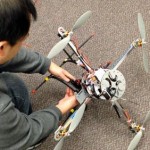 Drones, as Wikipedia notes, have been known primarily as military and special operations vehicles. But they are coming into practicality and favor for “a small but growing number of civil applications, such as policing and firefighting, and nonmilitary security work, such as surveillance of pipelines.” They’re often preferred, Wikipedia adds, “for missions that are too ‘dull, dirty or dangerous’ for manned aircraft.”
Drones, as Wikipedia notes, have been known primarily as military and special operations vehicles. But they are coming into practicality and favor for “a small but growing number of civil applications, such as policing and firefighting, and nonmilitary security work, such as surveillance of pipelines.” They’re often preferred, Wikipedia adds, “for missions that are too ‘dull, dirty or dangerous’ for manned aircraft.”
There they go, smudging the image, though not the ultimate utility, of civilian drones already. Flight rules will have to be worked out by agencies like the Federal Aviation Administration (FAA), so there will be no possibility of interference with aircraft with onboard pilots and passengers. But the domestic drone’s day is coming. The Senate Commerce Committee is holding hearings on their use. And the Federal Aviation Administration has established six drone test sites, preliminary to figuring out how to safely integrate them into U.S. airspace.
Wei Wei, a student at the University of Cincinnati, is convinced of that. The university is a center of drone research. Kelly Cohen, an associate professor aerospace engineering engineering and engineering mechanics there, says “our students see that unmanned systems can have a positive impact on society.”
Wei Wei is one those students. He’s speaking this week on the design of quadrotor drones (drones with four vertically-mounted propellors) at a UAV conference at National Harbor, Md. “A selling point for this configuration is its efficiency, in both time and money, and the accuracy.”
A University of Cincinnati team working with drones at the University of Toledo is well along on its Surveillance for Intelligent Emergency Response Robotic Aircraft (or SIERRA) project. It’s drones, advises phys.org, are being “outfitted with global positioning systems, environmental data, video and fire-prediction software to give real-time information to firefighters about where a fire is burning and where it is moving – information that could save lives.” Wei Wei has been part of this research, too, and it’s been drawing interest from the Cincinnati Fire Department.
There’s already jousting going on at the legislative level to prompt the FAA to issue regulations that will allow the safe use of civilian drones. That’s a likely outcome of all the current incubation going on, as well as the utility of the future’s civilian drones. – Doug Bedell
Comments
Will Shakespeare at the Ready
Posted on December 27, 2013
Filed Under The Writing Life | Leave a Comment
We’ve got a new technical writing colleague with us this morning, guys and gals. His name is William Shakespeare, and he has a really authoritative way with words. Will’s presence today is especially welcome because the question of avoiding “his” or “her” in technical writing has come up.
 The English language and usage StackExchange site seems a trifle confused on this. But it refers us to Wikipedia, the web’s collegial font of all wisdom, and, lo, they, too, think highly of Will Shakespeare. Which makes us doubly proud to have him on hand.
The English language and usage StackExchange site seems a trifle confused on this. But it refers us to Wikipedia, the web’s collegial font of all wisdom, and, lo, they, too, think highly of Will Shakespeare. Which makes us doubly proud to have him on hand.
So, what do you do, asks a StackExchange user, to avoid a limiting, in this case, male, gender in a sentence like, “The user attempts to maximize his own capacity.” Well, says Will Shakespeare when we turn to him (via Wikipedia), “There’s not a man I meet but doth salute me / As if I were their well-acquainted friend.” (That’s from Will’s rollicking play The Comedy of Errors.)
It turns out, adds Wikipedia, that “their can be understood equally well as referring to each man considered one at a time, or to all of them collectively.” That’s known, by golly, as the epicene their, meaning of indeterminate gender. And here, via Wikipedia, we have William Thackeray, another English authority, chiming in via his Rosalind saying in Vanity Fair “A person can’t help their birth.”
All of which proves that, should a technical writer’s boss raise questions about his or her usage (“their” simply doesn’t seem to work here, Will), it’s advisable to have a shelf of English classics at hand, assuming you’ve already read them, of course. Have a nice day, Will, and thanks. – Doug Bedell
Comments
Writing to Negotiate Challenging Settings Safely
Posted on December 16, 2013
Filed Under Technology, The Writing Life | Leave a Comment
In this season of giving, Michelle Nijhuis provides a paen to science writing, “The Science and Art of Science Writing,” on The New York Times Opinionator blog. Since science writing is the parent tree of technical writing, the sentiments here are worth sharing. “I blame a rattlesnake for my career,” Michelle begins.
 She what? Well, experiences are where you find them and Michelle one night found herself hiking through Arizona desert country when her party came upon a coiled rattlesnake. “The snake was gorgeous, even regal in its growing annoyance,” Michelle recalls, “but I found myself paying more attention to the scientists around it. What had brought them to this particular place and this very odd hobby?…The snake, I realized, was interesting. The people, dubious habits and all, were fascinating.”
She what? Well, experiences are where you find them and Michelle one night found herself hiking through Arizona desert country when her party came upon a coiled rattlesnake. “The snake was gorgeous, even regal in its growing annoyance,” Michelle recalls, “but I found myself paying more attention to the scientists around it. What had brought them to this particular place and this very odd hobby?…The snake, I realized, was interesting. The people, dubious habits and all, were fascinating.”
Just so. Technical writing becomes science writing in the service of helping people, real people making their rounds in actual enterprises – or even fussing with, say, a home computer – more adept at what they’re doing. Your text helps them solve a problem or run a mechanism. It’s the form of writing, perhaps, with the most immediate return, one of direct service and demonstrable results.
Industrial plants and other mechanisms can be terribly complex. To unlock them, to help make them efficiently functional and achieve appropriate results is to provide directions to an immediate end. That’s what technical writing does – there’s little time for pondering, but a great need for following efficiently laid out directions.
Hiking in the Arizona desert at night, you probably wouldn’t have a manual on hand for how to treat a rattlesnake (though you might). But, in Michelle Nijhus’ case, to observe smart people avoiding harm from the encounter was to decide to help other colleagues by providing clear insights and directions to the pathways of science. That’s not technical writing, as such, but it’s awfully close, as close as you might want to get to a rattlesnake without knowing clearly and carefully what you’re doing there. – Doug Bedell
Comments
Technical Directives are ‘Content,’ Too
Posted on November 23, 2013
Filed Under Communication, Technology, The Writing Life | Leave a Comment
It was inevitable, and probably not worth fussing over, but technical writing is now referred to, along with all the world’s other information, creative or otherwise, not simply as “information,” “instructions” or “directions,” but as content. Yes, the Big C now encompasses technical writing as, generically, it always did.
 In reflecting on the 50th anniversary of President Kennedy’s assassination, TechWhirl notes how the media/information world has evolved since then. “One thing that has surely changed” the site notes, “is how we find about the details of these national and global tragedies. In 1963, everyone waited for news from venerated news men such as Walter Cronkite, or tuned in their radios as a relatively few reporters bore responsibility for getting the facts out across the newswires. In 2013, we wait for nothing … we get pictures as they happen from the everyday citizens in the street, supplemented by non-stop coverage in the 24/7 cable news cycle. In 1963, the vast majority of humanity were relegated to passive consumers of news. Today, the vast majority can and do actively participate in creating and distributing—in sharing—news and other content.
In reflecting on the 50th anniversary of President Kennedy’s assassination, TechWhirl notes how the media/information world has evolved since then. “One thing that has surely changed” the site notes, “is how we find about the details of these national and global tragedies. In 1963, everyone waited for news from venerated news men such as Walter Cronkite, or tuned in their radios as a relatively few reporters bore responsibility for getting the facts out across the newswires. In 2013, we wait for nothing … we get pictures as they happen from the everyday citizens in the street, supplemented by non-stop coverage in the 24/7 cable news cycle. In 1963, the vast majority of humanity were relegated to passive consumers of news. Today, the vast majority can and do actively participate in creating and distributing—in sharing—news and other content.
“We, as content creators and deliverers, with some special types of expertise, still have much to learn about the processes: what constitutes news and facts, or even the “right” content?….”
In referring to themselves as “content creators,” TechWhirl’s editors, are of course, referring to their posts, not to technical writing (procedures and the like) as such. But it’s a ready extension to include our entire nuts-and-bolts craft as well. Technical writers (like web editors) need to know about the details of their offerings and about using pictures or diagrams to get make instructions as inclusively complete and helpful for their own “everyday citizens (users)” as readily as possible.
So, not cutting it too fine, good, well-organized writing, in whatever context and for whatever purpose, is, and has always been, content, which, itself, has surely been a buzzword as 2013 begins to turn. Hail to all content creators who do their work carefully and well! – Doug Bedell
Comments
3D Printers – Open Source Enablers Indeed
Posted on November 18, 2013
Filed Under Technology | Leave a Comment
Wow! We keep reading about the marvelous applications of 3D printing technology, but here’s one that really boggles the mind. Phys.org advises on how scientists can “print out” their own laboratory equipment for a fraction of its off-the-shelf cost. A $15,000 educational lab, for instance, can be run off for $500, says Joshua M. Pearce, author of the new book, Open-Source Lab; How to Build Your Own Hardware and Reduce Research Costs.
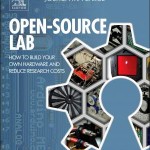 Pearce is an associate professor at Michigan Technological University. He needed, for example, a lab jack that would have cost $1,000. But he decided to try printing one out. “Using a printer and open-source software,” phys.org reports, “his team made a utilitarian replica for about five dollars.”
Pearce is an associate professor at Michigan Technological University. He needed, for example, a lab jack that would have cost $1,000. But he decided to try printing one out. “Using a printer and open-source software,” phys.org reports, “his team made a utilitarian replica for about five dollars.”
“Pearce,” the review adds, “hasn’t looked back.” And why would anyone who summons the nerve to make a device or gadget in plastic (as we understand it) on a 3D printer? Pearce says the new technology isn’t only for saving money. “Equipment designs can be shared as easily as recipes,” he advises. “Scientists from all over the world are contributing designs,” without leaving home, say, from China, India and Africa.
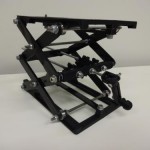 “If they could print their own equipment, they wouldn’t have to leave their home to study unless they wanted to, and many more talented people could contribute to experimental science. We could have a truly global scientific community.”
“If they could print their own equipment, they wouldn’t have to leave their home to study unless they wanted to, and many more talented people could contribute to experimental science. We could have a truly global scientific community.”
You can read more about Pearce’s appraisal of 3D printing technology in the pys.org post. But the more possibilities that emerge from what you can do from your own desktop these days, the more you have to realize how the intrepid application of computers, from home or elsewhere, is empowering individuals who might not have the opportunity otherwise to become creator-scientists. That’s a pedestrian thought, you may say at this point in the ever-advancing computer age. Maybe so, but while you’re fuming, could you run me off a new pair of scissors? – Doug Bedell
Comments
Notable Note-taking – Keep Your Notes for Reference
Posted on November 7, 2013
Filed Under Communication, Technology | Leave a Comment
You don’t have knowledge of any depth unless you keep notes – that is, you’re not likely to retain knowledge accurately without referring to the notes you take on it. And least most people aren’t that retentive.
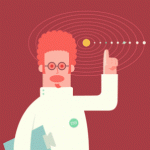 T.R. Grill, of the Society for Technical Communication at Lawrence Livermore National Laboratory, elaborates on the importance of note-keeping as much as note-taking. He leads off by citing a time-enshrined example of invaluable jotting, noting an observation by Eric Greene, a University of Montana biology professor, that “Henry David Thoreau’s field notes on the flowering times of 500 plants near Concord, MA (recorded in 1851-58), are still used today for comparison with current climate-change data.” Talk about (note-assisted) continuity of observation!
T.R. Grill, of the Society for Technical Communication at Lawrence Livermore National Laboratory, elaborates on the importance of note-keeping as much as note-taking. He leads off by citing a time-enshrined example of invaluable jotting, noting an observation by Eric Greene, a University of Montana biology professor, that “Henry David Thoreau’s field notes on the flowering times of 500 plants near Concord, MA (recorded in 1851-58), are still used today for comparison with current climate-change data.” Talk about (note-assisted) continuity of observation!
Greene would like to see science students “widen the scope of their note-taking to extend beyond just observations or numerical data to also include memory aids, organizational aids and commentary.” In other words, jot down what you find, what you do and how it works out.” Sometimes, we’d add, with an iPhone or iPad at hand, that may be extra enticing. Possibly you can take photos instead of making sketches. (And valuable activity like note-taking can help justify what you paid for the devices.)
Even without Apple’s company, keeping a notebook (ruled or unruled) is mandatory if you’re a technical person. That, after all, is the way it’s always been. You can, as Greene notes, include claims, guesses and questions in your notes so that you get a complete emerging picture of what you’re developing or analyzing.
Encore’s Dennis Owen recalls the importance of ready access to personal notes from his laboratory days at General Electric, his first job after college, “when I was a note-taking fool afraid I’d miss something that was important:
“When my boss asked, ‘What happened when the temperature got to so and so?’ the answer was in my lab notebook.”
For the sentimental among us, notes can have the same recall value as treasured photographs. But whether they enshrine sentiment or not, notes definitely have lasting value. You wouldn’t want to rely on your memory alone to replace them, not ever.
When Grill gets to the point of discussing the two-column “Cornell format” for notes, the URL he supplies unfortunately wasn’t working for us, but maybe it is now. Even so, you can also involve Google in your research and note-taking on note-taking. Whatever works for you when it comes to taking and retaining notes, keep doing it. – Doug Bedell
Comments
Analogies for Good Content – It’s Smooth, for One
Posted on October 28, 2013
Filed Under Communication, Technology, The Writing Life | 2 Comments
Okay, need an excuse for being an orderly writer? You shouldn’t, but if you do, look at it from the viewpoint of the content you’re working with. Oh really?
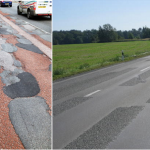 Well, that’s what a writer named Vinish Garg suggests you do in a post on the Enjoy Technical Writing (ETW) blog. Content, he feels, doesn’t like to be jostled around, or crammed into any place it seems it might fit. It seems to have bearings, real emotional needs, of its own. Garg uses analogies with a parking lot, a poorly patched road and a merge lane on a highway. The one we like best, that seems to fit best, is the poorly patched road.
Well, that’s what a writer named Vinish Garg suggests you do in a post on the Enjoy Technical Writing (ETW) blog. Content, he feels, doesn’t like to be jostled around, or crammed into any place it seems it might fit. It seems to have bearings, real emotional needs, of its own. Garg uses analogies with a parking lot, a poorly patched road and a merge lane on a highway. The one we like best, that seems to fit best, is the poorly patched road.
Content that doesn’t fit well, that doesn’t really belong in the place a careless writer put it, is like adding another sloppy patch to a poorly patched road. It’s not smooth, but bumpy. It causes the reader to wonder, “Does this make sense? Is it really correct? Does this really belong here?” And you don’t want to slow too much a driver whose main interest is breezing his way to understanding, or at least steering smoothly through a difficult patch. Readers, obviously, don’t like detours, roadblocks, or too many bumpy spots.
That’s not to agree that content has a mind, or intent, of its own, as Vinish Garg evidently feels, only that the reader does. He or she wants content that makes sense without too much steering. Good writing isn’t a game of bumper cars. – Doug Bedell
Comments
A Truly Challenging Electric Power Outlook
Posted on October 14, 2013
Filed Under Business, Government, Technology | Leave a Comment
You’ve got to wonder how widely the world will be wired for electricity in the not-so-distant future, say, 2050, and how we’re going to get there. A post on the phys.org site discusses that outlook as its being envisioned at the World Energy Congress being held this week in Daegu, South Korea. It refers, in the process, to some humbling, if not scary, figures.
 Writer Frederic Pouchot reports that population growth and accelerating urbanization are going to present the world with “a host of challenges” in the decades ahead. Indeed. A report issued by the World Energy Council (WEC) at the congress presented two energy scenarios – dubbed “Jazz” and “Symphony” – for the next four decades.
Writer Frederic Pouchot reports that population growth and accelerating urbanization are going to present the world with “a host of challenges” in the decades ahead. Indeed. A report issued by the World Energy Council (WEC) at the congress presented two energy scenarios – dubbed “Jazz” and “Symphony” – for the next four decades.
Under the market-driven Jazz scenario, “total primary energy supply could increase by 61 percent by 2050.” The government-led Symphony scenario “–focused on environmental sustainability and energy security–envisages an increase of 27 percent.” Both are big numbers, though the market-based projection sounds colossal. Ominously, both scenarios envision “CO2 emissions well-beyond the target levels deemed necessary to meeting the UN-set target of limiting global warming to 2 C (3.6F) over pre-industrial levels.”
The thing is, Pouchot notes, while both projections are, or should be, humbling, neither would be sufficient to meet the needs of a world population expected to grow to nine billion people, from seven billion today. And they’ll all be aspiring for prosperous lives.
We’re only providing a lead-in here. The WEC report itself is well worth your direct attention. But consider a figure between $19 trillion and $25 trillion–that’s what “the required investment in electricity generation alone” will be to meet 2050’s demand levels.
There’s so much for the world to be concentrating on, so many challenges to be met, as the relatively short-term future unfolds. Do you think we can get ourselves together to handle them? We can only hope and wonder at the same time. – Doug Bedell
(Photo – A solar power plant on the outskirts of Abu Dhbai, the capital of the United Arab Emirates in March of this year.)
Comments
Recently
- Presentations With Forethought
- Technical Writing’s Lineage – Surely It’s Deeper than Digital
- At the Holidays, Twitting Amazon
- Successful Cookie Baking – From Mom, an Acknowledged Expert
- Slides for a Tech Writer’s Craft
- Digital or Not, Be Clear
- Being Watchful About Digital Designs…
- When Proposals Don’t Click, Keep Making Them Anyway
- Like a Good Gardener, Help an Enterprise Keep Itself Current
- We’re Leaders All, And Need to Think That Way
Categories
Archives
- January 2017
- December 2016
- November 2016
- October 2016
- September 2016
- August 2016
- July 2016
- June 2016
- May 2016
- April 2016
- March 2016
- February 2016
- January 2016
- December 2015
- November 2015
- October 2015
- September 2015
- August 2015
- July 2015
- June 2015
- May 2015
- April 2015
- March 2015
- February 2015
- January 2015
- December 2014
- November 2014
- October 2014
- March 2014
- February 2014
- January 2014
- December 2013
- November 2013
- October 2013
- September 2013
- August 2013
- July 2013
- June 2013
- May 2013
- April 2013
- March 2013
- February 2013
- January 2013
- December 2012
- November 2012
- October 2012
- September 2012
- August 2012
- July 2012
- June 2012
- May 2012
- April 2012
- March 2012
- February 2012
- January 2012
- December 2011
- November 2011
- October 2011
- September 2011
- August 2011
- July 2011
- June 2011
- May 2011
- April 2011
- March 2011
- February 2011
- January 2011
- December 2010
- November 2010
- October 2010
- September 2010
- August 2010
- July 2010
- June 2010
- May 2010
- April 2010
- March 2010
- February 2010
- January 2010
Blogroll